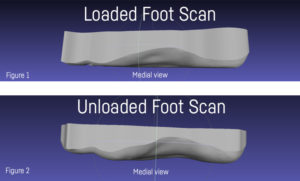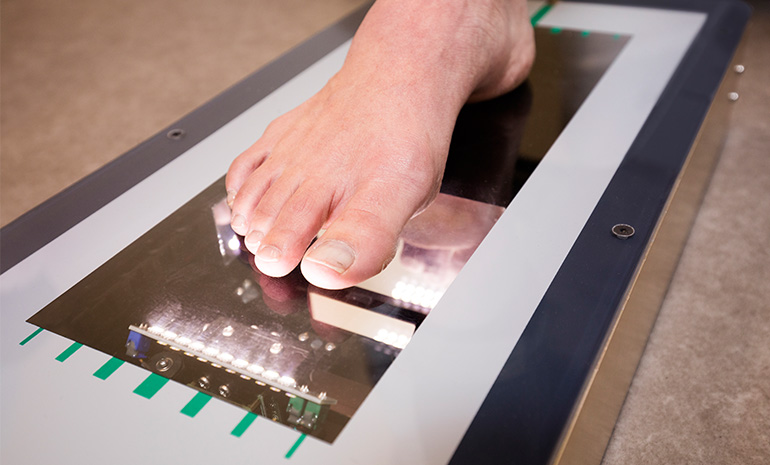One of the most common questions our lab receives is, “What is the best way to take a scan of a patient’s feet”?
There is no one answer and each practitioner and patient is different. The type of scan depends on the type of orthotic you are wanting to create and what result the orthotic is looking to achieve for the patient. The two scan types most often used are ‘loaded’ (weight bearing) and ‘unloaded scanning’ (non-weight bearing).
The main difference between a ‘loaded’ and ‘unloaded’ scan is the variance in profiles. In a loaded scan you will more accurately capture the profiles of the medial/lateral arch of the foot, compared to an unloaded scan, which will have higher profiles and not as closely represent the foot structure while walking.
Benefits of a ‘loaded’ scan
-
More accurately represents functional foot contours
-
Less comfort issues
-
The scanning plate ensures a neutral forefoot to rearfoot position is captured in the scan
-
Easier reproducibility between practitioners
Benefits of an ‘unloaded’ scan
-

Figure 1 shows a foot scanned from a loaded position. Note the drop in the medial profiles. This is due to arch loading and soft tissue displacement. Figure 2 is an example of an unloaded scan. Note the higher medial arch profiles. Higher profiles can mean potential for higher controlling devices
-
Will capture lateral arch
-
Replicates traditional non-weight bearing plaster casting
Figure 1 shows a foot scanned from a loaded position. Note the drop in the medial profiles. This is due to arch loading and soft tissue displacement. Figure 2 is an example of an unloaded scan. Note the higher medial arch profiles.
Which scan type is best for prescribing functional orthotics?
Both scanning types can be effective for your patient’s orthotics.
What you will notice as a practitioner though, is that the unloaded scans require less MLA and surface adjustment compared to loaded scans. When you use the loaded scans technique, there is a tendency to produce orthotics that require MLA adjustments to ensure comfort for the patient. This relates to practitioners typically asking for minimum or moderate arch adjustment when using unloaded scans, whereas loaded scans do not tend to need MLA correction.
Tips and tricks from the lab
Modern biomechanical /orthotic prescription theories place little importance on having the foot in a subtalar joint neutral position. For patients with symptoms related to excessive supinatory forces such as peroneal tendonitis or lateral ankle problems and a higher MLA; we advise scanning the foot in a pronated position. This helps to reduce the MLA height and medial contours of the foot. Also, this method will produce an orthotic that mimics the contours of the foot in a more desired position to reduce pathology.
How to set up for loaded and unloaded scans?
iOrthotics offers two different set ups for our scanners depending on the practitioners preferred method of scanning.
-
Flatbed trolley – we can provide a flatbed trolley (like a skateboard) to sit the scanner on. The lockable castor wheels on the trolley allow for easy mobility between treatment rooms or for storage.
-
Vertical mount – The vertical mount allows practitioners to take a semi-weight bearing or unloaded scan. This method replicates traditional non weight bearing plaster cast

